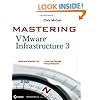Just received an update on the Kodiak project Bluebear has been working on for a while now. For those who are not familiar with Kodiak, it is a cross platform virtualization management application. Kodiak is based on flex and had a great start. Unfortunately as time passed by it went completely silent around Kodiak and I just received the news that Bluebear, the company behind Kodiak, decided to pull the plug due to the lack of funding.
Unfortunately, bluebear has been unable to find the funding necessary to move us forward as a company. Money or not, Kodiak’s 10,000+ beta participants would seemingly indicate that we bears were on to something great. True to our word, we have opened Kodiak’s source code under the GPL in the hopes that people will continue to find utility in our creation.
Anyone may browse or check out the source code.
svn co http://svn.bluebear.org/Kodiak
Contact bears@… if you’re interested in contribution as a developer.
If anyone is interested in helping out, please contact Bluebear!
 Almost a year ago one of my colleagues told me about a project he was working on called the “
Almost a year ago one of my colleagues told me about a project he was working on called the “ Chris McCain and
Chris McCain and  Saw some tweets wanting ways to generate load in a VM. Here’s one I prepared earlier:
Saw some tweets wanting ways to generate load in a VM. Here’s one I prepared earlier: 